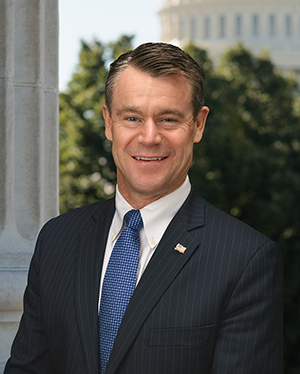
Indiana Medicaid Director Cora Steinmetz will resign in early 2025 after navigating the Office of Medicaid Policy and Planning through a forecast variance that resulted in cost containment strategies, new robust monthly financial reporting, and a more thorough policy review process.
“Few individuals have made such a remarkable impact on an agency in such a short time," FSSA Secretary Dr. Dan Rusyniak said. "Her leadership came at a pivotal moment, and Indiana was incredibly fortunate to have her at the helm of Medicaid. She guided us through unprecedented challenges with vision and determination, leaving our agency stronger, more resilient, and ready for the future.”
Steinmetz has been Medicaid director since August 2023. Previously, she worked as Gov. Eric J. Holcomb’s senior operations director for health-related state agencies, including the Family and Social Services Administration, Department of Child Services and Indiana Department of Health.
Indiana Medicaid faced an unprecedented $1 billion forecast variance in late 2023, and Steinmetz led the office in establishing a number of review and reporting practices to enhance oversight of the Medicaid budget, address the variance and ensure such a variance does not happen again, including:
- Implementation of improved financial forecasting and trend analysis, including the use of more real-time data.
- Monthly reporting processes to analyze trends and ensure transparency and stewardship of taxpayer resources.
- Development of agency-wide processes to review programmatic changes to ensure an understanding of enrollment, utilization, and reimbursement impacts.
Additionally, under her leadership, Indiana Medicaid has:
- Launched the Indiana PathWays for Aging program, a managed Long-Term Services and Supports (mLTSS) program and the state’s fourth managed Medicaid program. Indiana PathWays for Aging provides coverage for 120,000 Hoosiers, 80% of whom are dually eligible for Medicare and Medicaid.
- Transitioned the former Aged and Disabled waiver into two new waivers, the Indiana PathWays for Aging waiver for individuals aged 60 and older to coordinate waiver services with health coverage under the managed care program, and the Health and Wellness waiver for individuals under age 60 to improve alignment with other waivers supporting individuals with disabilities.
- Submitted a five-year extension of the Substance Use Disorder (SUD) and Serious Mental Illness (SMI) 1115 waiver to ensure continued access to a comprehensive continuum of behavioral health services for Indiana Medicaid members.
“Leading Indiana Medicaid during this time has been a rewarding and challenging experience," said Steinmetz. "I am grateful for the opportunity to have contributed to meaningful progress while serving alongside a passionate and purpose-driven team.”
Steinmetz, a licensed attorney, has also worked as a program director for government programs and revenue cycle compliance for IU Health and was an attorney for the Indiana Department of Revenue and the Bureau of Motor Vehicles. She is also a board member for Music for All, a national organization focused on music education.
She is exploring options for future employment.

The U.S. population grew by nearly 1.0% between 2023 and 2024, according to the new Vintage 2024 population estimates released today by the U.S. Census Bureau.
As the nation’s population surpasses 340 million, this is the fastest annual population growth the nation has seen since 2001 — a notable increase from the record low growth rate of 0.2% in 2021. The growth was primarily driven by rising net international migration.
Net international migration, which refers to any change of residence across U.S. borders (the 50 states and the District of Columbia), was the critical demographic component of change driving growth in the resident population. With a net increase of 2.8 million people, it accounted for 84% of the nation’s 3.3 million increase in population between 2023 and 2024. This reflects a continued trend of rising international migration, with a net increase of 1.7 million in 2022 and 2.3 million in 2023.
"Improved integration of federal data sources on immigration has enhanced our estimates methodology," said Christine Hartley, assistant division chief for Estimates and Projections. "With this update, we can better understand how the recent increase in international migration is impacting the country's overall population growth." (More information on the Census Bureau’s updates to how it measures international migration are available in Census Bureau Improves Methodology to Better Capture Increase in Net International Migration).
Natural increase also contributed to the population growth, as births outnumbered deaths by nearly 519,000 between 2023 and 2024. This marks an increase from the historic low in 2021 when natural increase was just over 146,000, but it was still well below the highs in prior decades.
“An annual growth rate of 1.0% is higher than what we’ve seen over recent years but well within historical norms,” said Kristie Wilder, a demographer in the Census Bureau’s Population Division. “What stands out is the diminishing role of natural increase over the last five years, as net international migration has become the primary driver of the nation’s growth.”
Meanwhile, the voting-age resident population (age 18 and over) grew to nearly 267 million, representing 78.5% of the population and the number of U.S. children (ages 0 to 17) declined by 0.2% from 73.3 million in 2023 to 73.1 million in 2024.
The South Remains Fastest-Growing Region
At nearly 132.7 million residents, the South is the most populous region. With a population gain of nearly 1.8 million — a change of 1.4% between 2023 and 2024 — the South added more people than all other regions combined, making it both the fastest-growing and largest-gaining region in the country.
The largest contributing component to this growth was international migration, which added 1.1 million people. Domestic migration netted another 411,004 residents. The South was the only region with positive net domestic migration, where the number of people entering the region exceeded those leaving. Natural increase also contributed 218,567 to the growing region.
Within the South, Texas (562,941) and Florida (467,347) had the largest numeric gains, and the District of Columbia grew the fastest (2.2%) from 2023 to 2024.
The population in the West grew by almost 688,000 (0.9%) to a total of 80,015,776 residents. This growth was consistent with the national trend and continued despite a net domestic migration loss of almost 170,000, offset by a gain of 667,794 from net international migration. There was a gain of 187,986 from natural increase. In the West, California (232,570) and Arizona (109,357) had the largest numeric gains between 2023 and 2024, while Utah (1.8%) and Nevada (1.7%) grew the fastest.
Just over 57.8 million people lived in the Northeast between 2023 and 2024. During that time, the number of residents increased by 0.76% — a gain of almost 435,000.
Growth in the Northeast largely stemmed from net international migration (567,420). The number of people moving from the Northeast to other parts of the country continued to slow as the region lost fewer residents via net domestic outmigration (192,109) in 2024 than in 2023 (278,245).
Within the Northeast, New York (129,881) had the largest numeric gains, and New Jersey (1.3%) had the fastest-growing population.
The population in the Midwest increased by over 410,000 (0.6%) to a total population of 69,596,584 in 2024.
The region had a net domestic migration loss of 49,214, far fewer than the net domestic outmigration of 89,787 in the previous year. The Midwest gained 406,737 people through net international migration and experienced a net gain of 52,741 from natural increase.
Within the region, Illinois (67,899) and Ohio (59,270) had the largest population gains, while North Dakota (1.0%) and Iowa (0.7%) were the fastest-growing states.
Population Increased in Most States
Between 2023 and 2024, the population increased in 47 states and the District of Columbia, with nine states (Arizona, California, Florida, Georgia, New Jersey, New York, North Carolina, Texas and Washington) experiencing population gains of over 100,000 people. The District of Columbia was the fastest growing (2.2%) among state and state equivalents for the first time since 2011.
Texas, the second-most populous state, had the largest numeric increase in the country, adding nearly 563,000 people for a total population of 31,290,831 in 2024.
North Carolina’s population surpassed 11 million (11,046,024) and Florida’s population now exceeds 23 million (23,372,215), as both states experienced growth well above the national average at 1.5% and 2.0%, respectively.
Three states saw their populations decrease slightly between 2023 and 2024: Vermont (-215), Mississippi (-127) and West Virginia (-516), up from two states that lost population between 2022 and 2023.
The losses in Mississippi and Vermont resulted from negative net domestic migration and natural decrease (more deaths than births), and the loss in West Virginia was from natural decrease.
Migration Drives State Growth
Births outnumbered deaths (natural increase) in 33 states and the District of Columbia, with natural increase highest in Texas (158,753), California (110,466) and New York (43,701).
Seventeen states experienced more deaths than births, down from 19 states in 2023 and 25 states in 2022. Pennsylvania (-9,311), West Virginia (-7,844) and Florida (-7,321) were the states with the highest levels of natural decrease.
Texas (85,267), North Carolina (82,288) and South Carolina (68,043) saw the largest gains from domestic migration, while California (-239,575), New York ( -120,917) and Illinois (-56,235) experienced the largest net domestic migration losses between 2023 and 2024.
Net international migration was positive for all 50 states and the District of Columbia.
Florida (411,322), California (361,057) and Texas (319,569) saw the largest gains from international migration.
Refer to the bottom of the release for tables on the Top 10 Most Populous States: 2024, Top 10 States by Numeric Growth: 2023 to 2024, and Top 10 States or State Equivalent by Percent Growth: 2023 to 2024.
Population Decline in Puerto Rico Slows
Puerto Rico had a population of 3,203,295 in 2024 — a 0.02% decline over the prior year.
Though Puerto Rico’s population declined, it did so at a much slower pace than in recent years, having experienced drops of 1.3% and 0.5% in 2022 and 2023, respectively.
The U.S. territory did experience positive net migration (15,204), although this gain was offset by natural decrease, as there were far fewer births (18,219) than deaths (33,920).
Methodology
For the Vintage 2024 population estimates, administrative data were used to adjust the net international migration estimates. Details on this adjustment are available in the Random Samplings blog, Census Bureau Improves Methodology to Better Capture Increase in Net International Migration.
In March, the Census Bureau is scheduled to release estimates of the July 1, 2024, population and demographic components of population change for metropolitan and micropolitan statistical areas and counties, and Puerto Rico municipio population estimates. The data will be embargoed. The full release schedule for the Population Estimates Program can be found on the Census Bureau’s website.
With each new release of annual estimates, the entire time series of estimates is revised for all years back to the date of the last census. All previously published estimates (i.e., old vintages) are superseded and archived on the FTP2 site. Due to periodic methodological updates, such as this year’s immigration adjustment, year-to-year comparisons in the estimates should only be done within the same vintage.
To compare U.S. national and state population and demographic components of population change with those of other countries, explore the International Database (IDB). The IDB consists of estimates and projections of demographic indicators, including population size and growth, and components of change like mortality, fertility and net international migration for more than 220 countries and areas. This information, along with interactive maps and subnational data, is available on the International Database: World Population Estimates and Projections page.
| Rank | Geographic Area | April 1, 2020 (Estimates Base) | July 1, 2023 | July 1, 2024 |
|---|---|---|---|---|
|
Source: U.S. Census Bureau, Vintage 2024 Population Estimates. |
||||
| 1 | California | 39,555,674 | 39,198,693 | 39,431,263 |
| 2 | Texas | 29,149,458 | 30,727,890 | 31,290,831 |
| 3 | Florida | 21,538,192 | 22,904,868 | 23,372,215 |
| 4 | New York | 20,203,772 | 19,737,367 | 19,867,248 |
| 5 | Pennsylvania | 13,002,909 | 13,017,721 | 13,078,751 |
| 6 | Illinois | 12,821,814 | 12,642,259 | 12,710,158 |
| 7 | Ohio | 11,799,453 | 11,824,034 | 11,883,304 |
| 8 | Georgia | 10,713,755 | 11,064,432 | 11,180,878 |
| 9 | North Carolina | 10,441,499 | 10,881,189 | 11,046,024 |
| 10 | Michigan | 10,079,338 | 10,083,356 | 10,140,459 |
| Rank | Geographic Area | April 1, 2020 (Estimates Base) | July 1, 2023 | July 1, 2024 | Numeric Growth |
|---|---|---|---|---|---|
|
Source: U.S. Census Bureau, Vintage 2024 Population Estimates
|
|||||
| 1 | Texas | 29,149,458 | 30,727,890 | 31,290,831 | 562,941 |
| 2 | Florida | 21,538,192 | 22,904,868 | 23,372,215 | 467,347 |
| 3 | California | 39,555,674 | 39,198,693 | 39,431,263 | 232,570 |
| 4 | North Carolina | 10,441,499 | 10,881,189 | 11,046,024 | 164,835 |
| 5 | New York | 20,203,772 | 19,737,367 | 19,867,248 | 129,881 |
| 6 | New Jersey | 9,289,014 | 9,379,642 | 9,500,851 | 121,209 |
| 7 | Georgia | 10,713,755 | 11,064,432 | 11,180,878 | 116,446 |
| 8 | Arizona | 7,158,110 | 7,473,027 | 7,582,384 | 109,357 |
| 9 | Washington | 7,707,586 | 7,857,320 | 7,958,180 | 100,860 |
| 10 | South Carolina | 5,118,252 | 5,387,830 | 5,478,831 | 91,001 |

On December 23, Governor-elect Mike Braun announced 20 new appointments to lead various state agencies and departments as his administration prepares to take office in January 2025.
The appointments include:
Steve Russo, Executive Director of the Indiana Public Retirement System
Holly Lambert, Insurance Commissioner
Lindsay Hyer, Executive Director of the Professional Licensing Agency
Thomas Fite, Director of the Department of Financial Institutions
James Michaels, Superintendent of the Indiana School for the Blind
Dr. David Geeslin, Superintendent of the Indiana School for the Deaf
Dr. Lindsay Weaver, Commissioner of the Indiana State Department of Health
Steve Cox, Director of the Indiana Broadband Office
Dan Huge, Chairman of the Indiana Finance Authority
Don Lamb, Director of the Indiana State Department of Agriculture
Lloyd Arnold, Commissioner of the Department of Corrections
Alan Morrison, Director of the Department of Natural Resources
Kevin Garvey, Commissioner of the Bureau of Motor Vehicles
Mitch Roob, Secretary of the Family and Social Services Administration
Jake Adams, Department of Veterans Affairs
Fred Glynn, Executive Director of the Office of Community and Rural Affairs
Brandon Clifton, Indiana Department of Administration Commissioner
Pete Miller, Executive Director of the Indiana Management Performance Hub
Kent Abernathy, Indiana Department of Transportation Commissioner
Adam Krupp, Director of the Department of Child Services
These appointments are in addition to the previously announced cabinet members:
Secretary of Business Affairs, Mike Speedy, will also serve as the head of the Department of Labor
Secretary of Commerce, David Adams, will also serve as head of the Indiana Economic Development Corporation
Secretary of Education, Dr. Katie Jenner, will also serve as head of the Department of Education
Secretary of Energy and Natural Resources, Suzanne Jaworowski
Secretary of Health and Family Services, Dr. Gloria Sachdev
Secretary of Management and Budget, Lisa Hershman, will also serve as the Director of the Office of Management and Budget
Secretary of Public Safety, Jennifer-Ruth Green, will also serve as the Director of Homeland Security
Secretary of Transportation and Infrastructure, Matthew Ubelhor
Superintendent of the Indiana State Police, Anthony Scott
Adjutant General of Indiana, Brigadier General Lawrence Muennich
Lieutenant General, Micah Beckwith
Chief of Staff, Joshua Kelley
The following senior staff positions have also been named:
Jason Johnson, Deputy Chief Of Staff, Legislative Affairs
Jessica Wedgewood, Deputy Chief Of Staff, Operations
Patrick Price, Governor’s Legal Counsel

On Monday, December 23, U.S. Senator Todd Young (R-Ind.) released the following statement after President Joe Biden vetoed the Judicial Understaffing Delays Getting Emergencies Solved (JUDGES) Act of 2024, legislation introduced by Young to address judicial emergencies and shortages across the country:
“This misguided decision is just another example of why Americans are counting down the days until President Biden leaves the White House. Issuing this veto is partisan politics at its worst. The JUDGES Act is a fair bill with strong bipartisan support that would have created 66 judgeships over three presidential terms to address our judicial backlog,” said Senator Young. “The President is more enthusiastic about using his office to provide relief to his family members who received due process than he is about giving relief to the millions of regular Americans who are waiting years for their due process. Biden’s legacy will be ‘pardons for me, no justice for thee.’”
Background on the JUDGES Act of 2024:
The JUDGES Act of 2024 would address judicial emergencies and shortages across the country by increasing the number of federal district judges in the most overworked regions of the country, including the Southern District of Indiana. The bill passed Congress with strong bipartisan support in both the Senate and the House of Representatives.
The JUDGES Act of 2024 would act on the findings in the nonpartisan 2023 Judicial Conference of the United States report by creating the recommended judgeships during future presidential administrations. Additionally, the bipartisan bill includes new transparency requirements and provisions to ensure greater access to justice in certain high-need areas of the country.
Congress bears the constitutional responsibility of establishing judgeships in the district courts of the United States. However, the last comprehensive authorization of new judgeships occurred in 1990 when then-Senate Judiciary Committee Chairman Joe Biden sponsored legislation that created 85 new judgeships for President George H.W. Bush to fill. Since then, targeted legislation enacted between 1999 and 2003 created 34 additional district court judgeships. It has now been two decades since Congress last authorized new district judgeships.
Senator Young first introduced the legislation in 2020 and re-introduced it in 2021 and 2023. Young also penned an op-ed urging President Biden to sign the JUDGES Act of 2024 into law.

By referring consumers to an Indiana-led multistate settlement, federal officials this month tacitly recognized the excellence of Attorney General Todd Rokita’s team.
In announcing its own settlement Dec. 10 with a Puerto Rico-based health care clearinghouse following a data breach, the U.S. Department of Health and Human Services (HHS) Office for Civil Rights (OCR) pointed consumers to an Indiana-led 33-state settlement with the same company reached more than a year earlier.
“The outstanding attorneys in our Consumer Protection Division are vigilant in safeguarding Hoosiers from corporate misconduct and protecting patient privacy,” Attorney General Rokita said. “It comes as no surprise to me that others would regard our work product as a gold standard.”
Both the federal and state settlements resolve allegations that Inmediata Health Group LLC violated state and federal laws, including the Health Insurance Portability and Accountability Act of 1996 (HIPAA), by exposing consumers’ protected health information online in a data breach.
In a press release, federal officials stated, “Under the terms of the settlement, Inmediata paid OCR $250,000. OCR determined that a corrective action plan was not necessary in this resolution as Inmediata had previously agreed to a settlement with 33 states that includes corrective actions that address OCR’s findings in this matter.”
Inmediata’s own investigation revealed that a coding issue potentially exposed the electronic protected health information of approximately 1.5 million U.S. individuals.
Under the Indiana-led settlement, Inmediata agreed to overhaul its data security and breach notification practices and make a $1.4 million payment to states — including more than $131,000 to Indiana.
- Driving Away Deceptive Conduct In The Used Car Industry, Attorney General Files Six Lawsuits On Behalf of Buyers
- Senator Young and Colleagues Applaud Passage of Bill to Provide TSA PreCheck to Disabled Veterans
- Braun Announces Adjutant General Of Indiana
- Houchin Appointed to House Energy and Commerce Committee
SalemLeader.com
Leader Publishing Company of Salem, Inc.
P.O. Box 506
117-119 East Walnut Street
Salem, Indiana. 47167
Phone: 812-883-3281 | Fax: 812-883-4446
Business Hours:
Mondays through Fridays, 9:00am - 5:00pm
News:
news@salemleader.com
Office:
office@salemleader.com
Publisher:
publisher@salemleader.com
Business
- More Business News
- Go To Guide
- Business Directory
- Auctions
Education
- More Education News
Opinion
- Editorials
- Letters to the Editor
- Columns
- Unsung Heroes
- Days Gone By
- In the Garden
- Guest Columns
- Reader's Poll
- Salem Leader Forum
- Questions and Answers
Church
- Bible Aerobics
- Church News
- Church Directory

